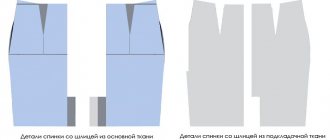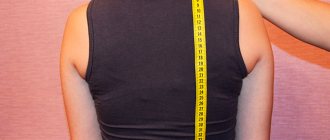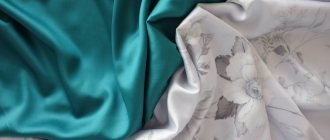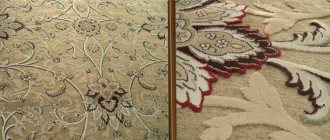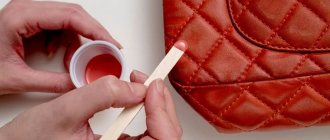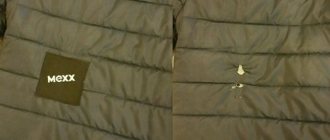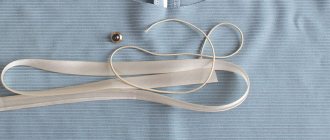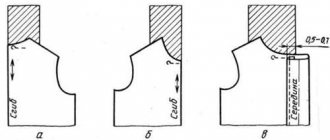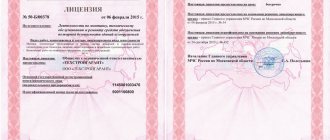Fluffy skirts in the Newlook style or “sun” and “tatyanka” skirts have become very popular again. Finally, feminine silhouettes began to prevail over shapeless things, overly vulgar outfits and outright boyish “outfits”.
Dresses with full skirts made of tulle or tulle are a very popular trend among young girls. Lush multi-layered skirts are now worn not only by ballerinas. Transformed tutu skirts are increasingly seen not on the big stage, but on the streets of the city. Surely, you have long wanted to get such a skirt or even a dress with a full skirt. Well, let's try to sew it with our own hands, especially since it is not at all difficult!
DIY fluffy tulle skirt
How to sew a dress with a full tulle skirt
Our dress will consist of a fluffy cut-off skirt, sewing which is our main task. You can use the pattern of a sheath dress as the basis for the top - you can download it in this article. There is an even simpler option - use a ready-made item as a top - a T-shirt, jumper or shirt. By the way, in one of the previous articles, I already posted a master class on creating a dress with a full skirt for a girl using a ready-made blouse - here.
The lower part of the dress is a circle skirt, consisting of several layers. The first layer is the lining, and the top layers are tulle or tulle. The more top layers, the fuller the skirt will be. I wrote in great detail about how to sew a circle skirt in this article. There are also formulas for calculating the required amount of fabric. In other words, we have already studied all the drawings and patterns in previous articles, all that remains is to show a clear example of sewing a full skirt.
How to knit a stylish dress with a fluffy skirt using yarn with your own hands
The upper part of the dress can be either a ready-made top, for example, a T-shirt or a long-sleeve sweater, or a top sewn or crocheted with some interesting dense pattern. This lesson deals with the latter case.
In order to knit top dresses for girls you will need the following necessary materials and tools:
- 2 skeins of yarn (mercerized cotton);
- hook 1.6 mm;
- beads for decoration (optional).
The number of loops depends on the chest circumference. The top should be knitted according to the patterns and patterns given below.
When the top is ready, you will need to sew on a skirt, which can be done in different ways according to the instructions below, and the dress will be ready.
The easiest way to achieve a full skirt for a dress is to use tulle as the main material. Therefore, in this lesson we will look at several options for making a skirt from this particular material.
Particular attention should be paid to the choice of tulle, since different purposes may require fabric of different hardness, dullness, transparency and cell size.
Rigid tulle holds its shape better, but its edges can scratch the skin or create snags on tights. Thin tulle does not have such disadvantages, but for a truly full skirt you will need much more of it than rigid tulle. Tulle skirt: method 1.
The easiest way to make a full skirt does not even involve sewing as such; the skirt will be made only from tulle and mesh (elastic). This skirt is especially suitable for overweight girls, because it perfectly hides figure flaws. However, it will look great on thin girls too: a short dress with a pre-designed full skirt emphasizes the length and slenderness of the legs.
Making a skirt using this method involves three simple steps:
- Cut the tulle into strips 15 centimeters wide and twice as long as the desired length of the skirt itself.
- For convenience, put a mesh elastic band on any item.
- Tie the tulle strips folded in half to the mesh, starting from the bottom row. The more rows, the more magnificent the skirt will be.
If you can’t find a mesh elastic band, you can use a regular wide type elastic band. In this case, you need to tie the stripes directly on the elastic band, which will serve as a belt.
Ready! If desired, the skirt can be decorated with beads and flowers and the tulle can be trimmed to create a train.
Tulle skirt: method 2.
A skirt made using this method will look a little different, since it will be made on a cover. In order to sew such a skirt you will need the following materials:
- a piece of soft tulle (the amount of fabric depends on how long the skirt is required: floor-length, knee-length or below the knees);
- a piece of stretchy and loose fabric for the base;
- wide elastic waist length and a margin of 2 centimeters;
- scissors;
- centimeter;
- pins;
- threads of the same color as the tulle;
- tracing paper
So, working on this skirt includes the following steps:
- Draw a pattern on tracing paper as shown below (the white arrow indicates the waist radius, and the black arrow indicates the length of the skirt).
- Cut out the template.
- Fold a piece of tulle in half lengthwise. Repeat folding until you have 8 layers of fabric.
- Fasten the tulle with pins and cut a semicircle according to the template so that you get 4 circles of fabric with a hole in the center.
- First sew 2 circles along the edge of the hole, then sew the rest one by one.
- Divide the hole with pins into 4 equal parts.
- Sew the joined ends of the elastic overlapping, and divide the sewn elastic into 4 equal parts with pins.
- Fasten the fabric to the inside of the elastic and sew with a zigzag.
- Get started with the base. Sew a folded rectangular piece of fabric along the side edge.
- Place a basting stitch along the top edge of the warp and tighten the thread so that it sits snugly at the waist.
- Sew the base to the elastic under the tulle layer. If necessary, trim the fabric so that it does not peek out from under the tulle.
The tulle skirt is made, all you have to do is sew it to the top, and the dress will be ready!
How to sew a full tulle skirt
What you will need:
- polyester fabric for lining,
- tulle or tulle for the top layers,
- wide elastic band.
Preparing a paper pattern (in the photo there is a measuring tape in inches!)
Step 1. Prepare a paper pattern. Measure the circumference of your hips at the most convex part, divide this value by 3.14 (Pi, remember geometry :-)), and then divide the result by 2. For example, if your hips are 95 cm, then the radius of the circle for the waist will be like this: 95: 3.14:2 = 14.33, rounded to 14.5 cm. This distance must be set aside from the corner of the paper fold and draw a semicircle.
Set aside the length of the skirt (in the photo the ruler is in inches!)
Step 2. From the waist level, set aside the desired length of the skirt. Most often 50 - 55 cm, taking into account the hem of the bottom. Cut out the pattern.
Transfer the pattern to the fabric
Step 3. Transfer the pattern to the fabric folded in four. Cut it out. We process the bottom.
Transfer the pattern to the tulle
Step 4. In the same way, transfer the pattern to the tulle. We cut out the tulle and pin it to the “donut” of the main lining fabric.
Sew the top edge
The fluffy skirt is almost ready, all that remains is to sew on the elastic
Step 5. We sew all the layers and process the top edge of the skirt with an overlocker.
We make marks at equal intervals on the elastic and on the cut of the skirt
Pin the elastic to the skirt following the marks
Sew elastic to the skirt
Step 6. Cut the elastic and sew it together. We measure the length of the elastic at your waist. We put 8 marks on it at equal intervals. We also put 8 marks on the cut of the skirt. We pin the elastic to the skirt, follow the marks, and sew it on.
The fluffy tulle skirt is ready!
The same skirt only made of white tulle
Full white tulle skirt
The fluffy skirt is ready! You can wear it as a separate item, or you can sew on a top and make a dress, as shown in the MK below.
Fluffy tatyanka skirt with lining without pattern
What are we sewing today? A very popular model in summer: a skirt - “tatyanka” , as it is popularly called. It is quite easy to sew such a skirt with your own hands , without having any patterns or special complex knowledge in pattern-making technology.
I am glad that a girl with a sewing education is a specialist, agreed to cooperate with the site and is ready to share her knowledge and skills with us. Word from Yulia Kulagina.
Greetings! A fluffy skirt with ruching in the front - tatyanka, which I will tell you about in detail today, can be sewn of absolutely any length, fullness, from any fabric. Please note - and for any time of the year.
We select fabric that suits the season. In winter and autumn, these can be thick fabrics that can be easily draped so that the gathers on the skirt look beautiful. Instead of gathering, you can put pleats on the skirt, which are calculated based on the waist size and the width of the fabric used. We will need: main fabric - I used cotton, and lining fabric - cotton cambric.
Your measurements for the skirt:
- Waist;
- The width of the belt;
- the desired length of the skirt from the waist (don’t forget - we subtract the width of the belt from this value).
1.Tatyanka skirt pattern
- two rectangles with a length (height) equal to the desired length of the skirt (minus the width of the waistband) +7 cm (6 cm of which is the hem allowance for the bottom and 1 cm is the seam allowance for attaching the skirt to the waistband), and a width equal to the desired fullness ( the fuller the skirt, the wider the rectangle);
- two parts of the belt (essentially two rectangles) - divide the waist volume in half, add 2 cm for allowances to the first half - this will be the length of the front part of the belt, add 7 cm for allowances to the second half - this will be the length of the back part of the belt. Belt width: multiply the width by two (parts are cut out with a fold) + 2 cm for seam allowances
READ ALSO: Fluffy American style skirt for a girl
Skirt lining:
We cut out the lining: two rectangles (front and back panels) with a length equal to the length of the main part of the skirt, a width 10 cm less than the width of the main part of the skirt.
Stages of sewing a skirt
We sew the side seams of the skirt on both the main fabric and the lining , leaving the area under the zipper on the main skirt and on the lining unstitched. We sweep up the unstitched areas. Press the seams, then press them out.
4. Fold the lining with the main skirt along the bottom edge face to face and stitch. We iron the seam onto the lining. Set aside 0.1 cm (I use my favorite decorative stitch). Ironing
5. Sweep and sew into the skirt . Sew the lining to the zipper
6. We cut off the lining and the main skirt along the upper cut (you can sweep it), thereby forming a hem-roll on the wrong side from the main fabric along the bottom of the skirt. Iron the hem well
7. Place two lines along the top edge for assembly and assemble the assembly. If these are folds, then we lay and sew the folds. We put the skirt aside.
Skirt belt loops
We prepare belt loops. The width of the parts is 3 cm, the length is 30-40 cm. The parts are made according to the principle of bias tape, ironed again lengthwise in half and stitched to the edge. You can make them from bias tape, but since I had some fabric left over, I decided to use it as much as possible.
READ ALSO: Summer shorts
How to sew a skirt belt
We glue the details of the belt, sew down the right side seam, and iron it. We process one cut with bias tape. Iron the waistband in half lengthwise.
An important point: we pull back the lower part of the belt, while at the same time pressing the upper part with an iron - this will ensure a better fit of the belt at the waist. There should be some kind of arc
10. We measure the required waist length on the belt, aligned with the side seam. We fold the raw edge of the belt with the gathered edge of the skirt, so that on the front part we get an allowance (previously laid down) of 1 cm, on the back part (previously laid allowance of 6 cm), i.e. there will be a “tail” on the back. We sew the skirt to the belt. We remove the assembly lines. Iron the assembly seam.
11. We sew in the allowances and cut off the corners. Turn it inside out. Ironing
12. We pin our loops from the inside out, one to the side seam of the skirt, the other next to the zipper. We sew the belt in three stages: this is important in order to sew the belt accurately so that nothing gets warped. First, we baste the gathering seam, pressing the allowance onto the waistband, then we baste the waistband itself, fixing it along the fold. Next, we baste the edge treated with bias tape to the waistband as it fits, without over-tightening.
13. Sew along the face of the skirt, exactly at the seam. Iron it.
14. Mark the loops at a distance of 1 cm from the edge. Let's break through. Sew on the buttons.
15. Steam the skirt.
So we have sewn a summer “Tatyanka” skirt with lining and exactly according to your measurements. I invite you to look at my store at the Crafts Fair. Good luck to everyone and new achievements in needlework, your Yulia Kulagina
